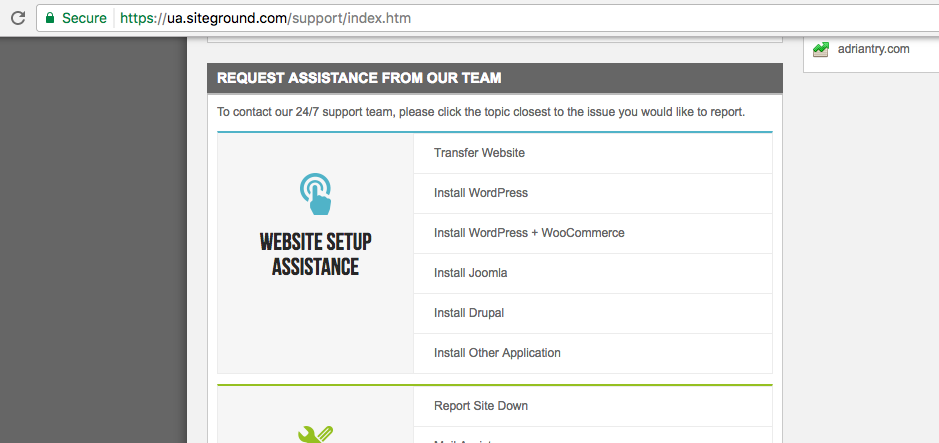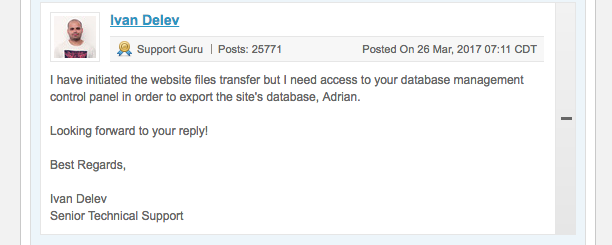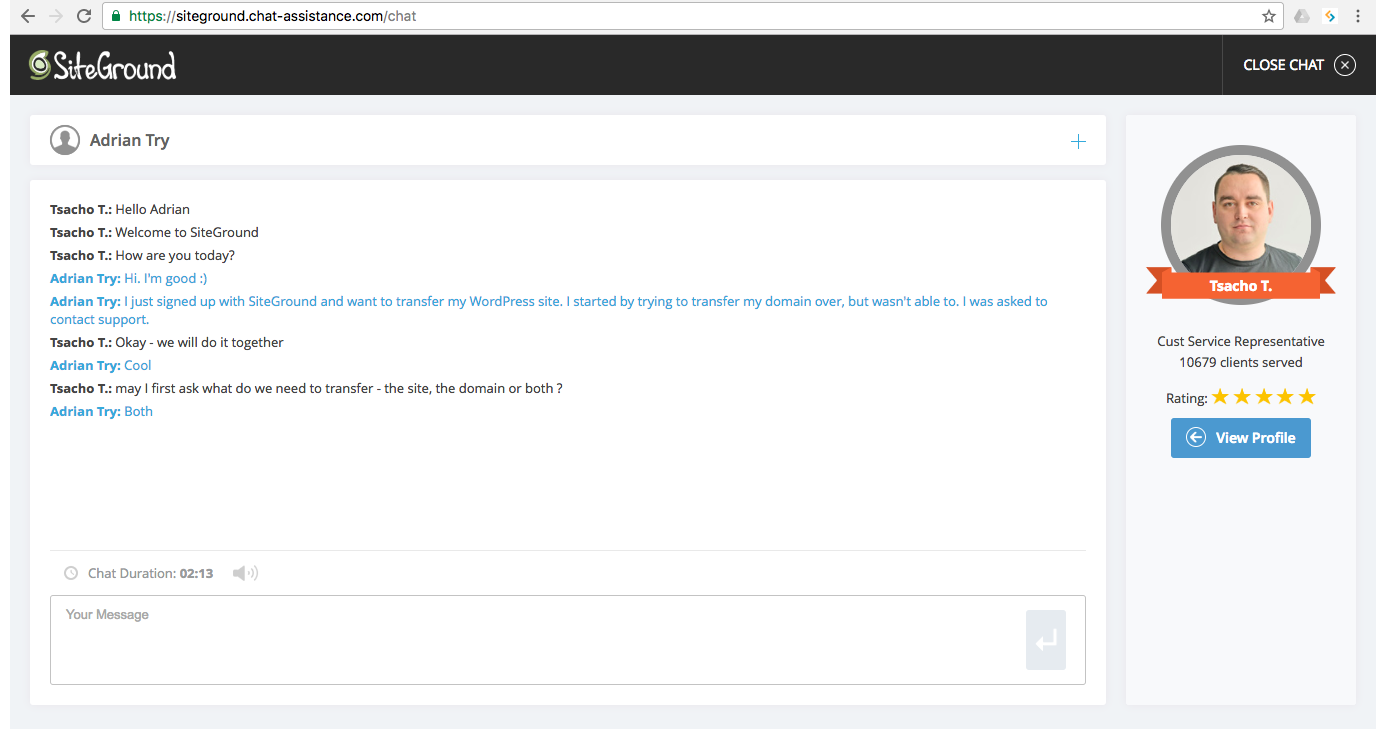A Review of SiteGround’s Migration Service

Key Takeaways
- SiteGround offers a stress-free website migration service, with their team handling all aspects of the process, including clarifying any arising questions and ensuring all necessary information is provided. This service is free for your first website migration.
- The migration process can take a few hours to a couple of days, depending on the complexity of your site. The majority of this time may be waiting for responses from the client, rather than the SiteGround team performing the actual migration.
- SiteGround also offers domain name transfer services for a fee, which includes an additional year of domain registration and covers the transfer fee to the registrars. This service is accompanied by helpful support throughout the process.

This article is part of a series created in partnership with SiteGround. Thank you for supporting the partners who make SitePoint possible.
It is said that moving house may be one of the most stressful events you encounter in life. Moving your website to a new hosting provider involves similar steps: choosing a new home, planning and preparation, and the move itself. Is it possible to do it stress-free? I decided to find out.
In our last article, Migrating Your WordPress Site to A New Hosting Provider, we showed how you can simplify the process of moving your website by the use of plugins.
But the process may still sound intimidating. After all, you don’t migrate a website every day. You can avoid the time and effort involved in a WordPress migration—and potential missteps or disasters—by handing the job over to an experienced professional.
SitePoint recently partnered with SiteGround as our official recommended host, and they offer such a service. They have a team of support people who do migrate websites every day waiting to help. In fact, they’ll migrate your first website for free.
That sounds like an offer too good to miss out on, so I decided to try it out. Here’s how it went.
SiteGround Offer to Migrate Your Website for You
Log into your SiteGround account, and click go to the Support page. Part way down the page you’ll find a link to transfer a website.

Fill in the form requesting them to transfer your website, giving them your hosting credentials along with any details they need. In particular, if you have more than one website, make sure you clearly explain which one you are requesting them to transfer.
Oh, and before submitting the ticket, it’s a good idea to first create a backup of your site.
They Will Clarify Any Questions that Arise
Soon after submitting the form, the SiteGround team will be on the job. In fact, the next thing you might hear is that the website transfer has been successfully completed.
But questions may arise, and decisions may need to be made. Don’t worry, you’ll be involved in all decisions. When the support team need some information from you, you’ll be notified by email, and the process will wait until you respond via the ticketing system.
That happened several times in my case. As I responded to each question that arose, a different support representative would pick up them ball and move things forward. I found them knowledgable and helpful, and it was great to see the names and photos of the staff I was dealing with.

Here are the questions that were clarified during my site migration:
- A request for me to take action. Some infected files were found, and needed to be cleaned up before my WordPress install was copied onto SiteGround’s servers. One of my sites was recently hacked, and some of the malware was still lurking around, though not in the folder I was migrating.
- Clarifications about login details. I initially only gave my FTP credentials for copying the files. Login details for mySQL or cPanel were required for the database migration.
- Clarifications about the database. Something didn’t seem right – it looked like the database belonged to a different domain. We realized that the database from a different WordPress installation had been migrated, and this was quickly rectified.
Once All Questions Were Clarified, the Site Was Transferred
Not long after answering SiteGround’s questions I was notified that the migration was successfully completed. That was pretty easy! How long did it take in total? A few days.
If that sounds slow, it’s because most of that time was SiteGround waiting for me, not the other way around. If we used a chess clock to time the migration, SiteGround’s moves took less than eleven hours, while mine took more than two and a half days.
Dealing with the questions that arose was essential, but took time.
- I would have saved some time by giving my cPanel credentials at the beginning.
- It took a few days to find time to clean up the infected files – it was a busy week.
For a migration where no questions arise, I imagine the transfer would take just a few hours.
Transfer Your Domain Name Too
In addition to transferring my hosting to SiteGround, I wanted to transfer my domain name too—it’s convenient to have everything taken care of by one company. This costs $14.95, which includes an additional year of domain registration and covers the transfer fee to the registrars.
SiteGround was more than happy to support me through the process over chat. In less than a minute I was being helped by Tsacho, a customer support representative. I explained what I wanted to do, and he responded, “OK – we will do it together.”

He patiently led me through the process, and used humour to keep me smiling. 38 minutes later the transfer was complete. “Pleasure was all mine. Enjoy your working day as I will try to do. Still 6h to go. ;)”
Summary and Helpful Tips for Your Next Migration
I’m happy with the end result. My site was transferred quickly, successfully, and without stress.
Here are a few tips I can pass on from my experience:
- Give your cPanel username, password and URL up front. The less questions the support people need to ask you, the quicker your migration will be.
- If you have more than one website, give as much detail as you can when describing which one to migrate.
- Before starting the migration, back up all of your websites. Hope for the best, and prepare for the worst.
And finally, don’t procrastinate. There’s no reason to put this off another day. Experienced support gurus are on hand to migrate your website for you. Stress-free.
Frequently Asked Questions about SiteGround’s Migration Service
How long does the migration process take with SiteGround?
The duration of the migration process with SiteGround can vary depending on the size and complexity of your website. Typically, a standard migration can take anywhere from a few hours to a couple of days. However, for larger websites with more complex structures, the migration process may take longer. It’s important to note that during the migration process, your website will remain live and accessible to your users.
Is there any downtime during the migration process?
SiteGround aims to ensure a seamless migration process with minimal to no downtime. They use advanced technology and methods to transfer your website data, ensuring that your website remains live during the migration process. However, there may be a brief period of downtime during the final stages of the migration, which is typically scheduled during off-peak hours to minimize any potential impact.
What types of websites can SiteGround migrate?
SiteGround offers migration services for a wide range of websites, including WordPress, Joomla, Drupal, Magento, and other CMS platforms. They also support migration of custom-built websites. Regardless of the platform your website is built on, SiteGround’s team of experts can handle the migration process.
Can SiteGround migrate my email accounts?
Yes, SiteGround can migrate your email accounts as part of their migration service. They will transfer all your email data, including your inbox, sent items, and folders, ensuring that no data is lost during the migration process.
What if I encounter issues after the migration?
SiteGround offers post-migration support to ensure that your website runs smoothly after the migration process. If you encounter any issues, their support team is available 24/7 to assist you.
Is SiteGround’s migration service secure?
Yes, SiteGround’s migration service is secure. They use encrypted connections for data transfer, ensuring that your website data is safe during the migration process.
Can SiteGround migrate my website from any hosting provider?
Yes, SiteGround can migrate your website from any hosting provider. They have a team of experts who are experienced in migrating websites from various hosting platforms.
Will my website’s SEO be affected by the migration?
SiteGround’s migration process is designed to ensure that your website’s SEO is not affected. They take care to maintain your website’s URL structure and meta tags during the migration process, which are crucial factors for SEO.
Can SiteGround migrate my website if it’s built with a website builder?
Yes, SiteGround can migrate websites built with website builders. However, the process may be more complex and may require additional steps compared to a standard migration.
What information do I need to provide for the migration process?
To start the migration process, you will need to provide SiteGround with access to your current hosting account. This includes your hosting account login details and any other information required to access your website data.
Adrian Try is an Aussie writer, musician, cyclist, and tech geek.

Published in
·Android·App Development·Internet of Things·iOS·Mobile·Node.js·Tools & Libraries·August 10, 2016





